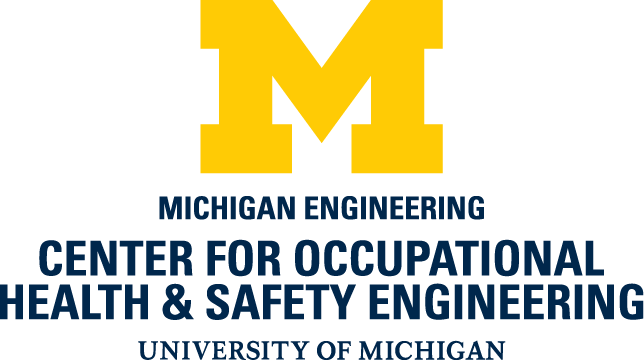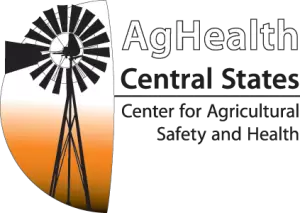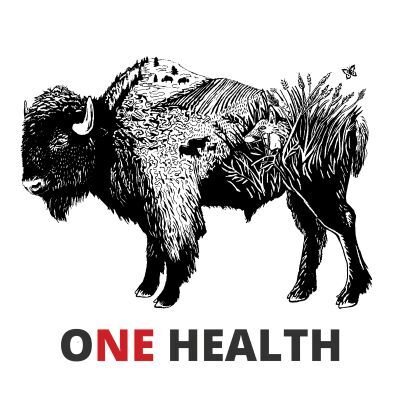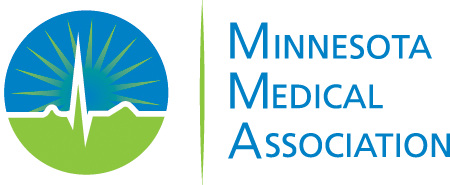AgriSafe Learning
Catalog Advanced Search
-
Contains 3 Component(s), Includes Credits Includes a Live Web Event on 01/08/2026 at 12:00 PM (CST)
Join this session to learn how assistive technology is transforming agriculture for farmers and ranchers with disabilities—and how, together, we can build more inclusive rural communities.
Summary: Join this session to learn how assistive technology is transforming agriculture for farmers and ranchers with disabilities—and how, together, we can build more inclusive rural communities.
Objectives: During this presentation, attendees will learn...
- Physical and cognitive disabilities can create real obstacles in daily farm operations.
- This might include mobility issues—like climbing onto a tractor or navigating rough terrain—or sensory impairments like limited vision or hearing. Cognitive disabilities, such as those caused by brain injuries or conditions like PTSD, can affect decision-making and time management.
- Beyond the physical, there are economic and social challenges.
- Adaptive equipment can be costly, and many rural communities lack support services. There's also the stigma. Isolation. A lack of understanding. We will discuss that despite these challenges, many farmers persevere—especially when given the right tools.
Intended Audience: All people working with or in the agriculture community, especially those with disabilities or working with people with disabilities.
Cindy Kovar, BS, CPST, CarFit Technician & Coordinator, AARP Certified Instructor
Program Manager
Texas AgrAbility
Cindy Kovar is a proud graduate of Texas A&M University with over 25 years of experience in the field of community health. As a key contributor to the Texas AgrAbility Project, Cindy brings a wealth of expertise in fostering client and partner relationships, designing impactful educational programs, conducting comprehensive farm and ranch assessments, and recommending assistive technologies tailored to agricultural needs. Her greatest career achievement lies in the meaningful and lasting impact she has had on the lives of Texans across the state.
-
Register
- Non-member - Free!
- Member - Free!
- More Information
-
Contains 7 Component(s), Includes Credits Includes a Live Web Event on 12/10/2025 at 2:00 PM (CST)
What is QPR? QPR training teaches laypeople and professionals to recognize and respond to mental health crises using the approach of Question, Persuade and Refer. To attend this training participants must be 18 years of age or older. In this 1.5-hour QPR training, we will provide: Information on the unique challenges farmers face that can lead to stress, depression, and suicide. Examples implementing each QPR component with someone at risk for suicide. Information on how to help someone at risk of suicide. Registration spots are limited, so please only register if you can attend the event. No recording of this training will be available.
What is QPR? QPR training teaches laypeople and professionals to recognize and respond to mental health crises using the approach of Question, Persuade and Refer.
To attend this training participants must be 18 years of age or older.
In this 1.5-hour QPR training, we will provide:
- Information on the unique challenges farmers face that can lead to stress, depression, and suicide.
- Examples implementing each QPR component with someone at risk for suicide.
- Information on how to help someone at risk of suicide.
Registration spots are limited, so please only register if you can attend the event. No recording of this training will be available. Interested in hosting a QPR training session for your organization?
Continuing Education for Community Health Workers: CHW and/or CHW-I CEUs are available through the University of Texas at Tyler Health Science Center, Center for Community & Rural Health Education. See individual courses for additional information.

Continuing Education for Multiple Disciplines: This course is jointly provided by the University of Michigan Center for Occupational Health and Safety Engineering.

Olivia Bury, MA, LPC
Behavioral Health Specialist
AgriSafe Network
Olivia is the Behavioral Health Coordinator and lead on suicide prevention training programs at AgriSafe. She received her master's degree in Clinical Mental Health & Guidance in 2022. Olivia providers QPR and CALM trainings that focus on the unique stressors that those in agriculture experience. In addition to her AgriSafe role, Olivia is a provisional licensed counselor. She works part time at a school, where she works with pre-k to middle school students.
Laura Siegel, MA
Health Communications Officer
AgriSafe Network
Laura received her master’s degree in Writing, Rhetoric, and Technical Communication from James Madison University in 2021, with a concentration in Health and Scientific Communication. Her professional interests include supporting her local ag. community, increasing public health literacy, and decreasing the stigmas surrounding mental health disorders and substance use disorders.
Laura’s current projects include script arranging for AgriSafe’s Talking Total Farmer Health podcast, copyediting a broad range of content, developing digital content, helping with health communication initiatives, and marketing materials, and assisting the Web Technologies Librarian with website accessibility and digital content management.
- Registration Closed. Maximum Number of Registrants reached.
- More Information
-
Contains 3 Component(s)
For producers, spotting the first signs of a possible avian influenza outbreak can bring on a flood of stress, worry, and tough decisions. The emotional toll — before, during, and after flock depopulation — is real, and it affects everyone involved. So how do we recognize when someone’s struggling with all of this? And maybe more importantly, how do we show up for them — as coworkers and team members?
For producers, spotting the first signs of a possible avian influenza outbreak can bring on a flood of stress, worry, and tough decisions. The emotional toll — before, during, and after flock depopulation — is real, and it affects everyone involved. So how do we recognize when someone’s struggling with all of this? And maybe more importantly, how do we show up for them — as coworkers and team members?
In this webinar, we’ll talk about how to support each other through the mental and emotional challenges that come with avian influenza outbreaks. We’ll walk through some simple strategies that individuals and teams can use, and introduce a helpful tool designed to guide those conversations and check-ins. Extra resources will be provided that you can lean on, whether you’re going through it yourself or helping someone else.



Tara Haskins, DNP, MSN, RN, AHN-BC
Total Farmer Health Director
AgriSafe Network
Dr. Tara Haskins oversees partnerships to support AgriSafe’s Total Farmer Health initiative. She is also responsible for AgriSafe’s mental health programming. Tara contributes to curriculum design and implements new Total Farmer Health trainings that optimize and expand upon existing programs. She collaborates with organizations and government agencies that are interested in using the Total Farmer Health model as a public health framework.
Tara has worked in healthcare as a registered nurse for 37 years with clinical experience in medical surgical, critical care, crisis intervention and opioid and alcohol outpatient treatment. Dr. Haskins worked for 11 years in academia as lead faculty in musculoskeletal and psychiatric mental health nursing content across three universities.
Linda Emanuel, BSN, RN
Community Health Liaison
AgriSafe Network
Shaped by her experience as a Registered Nurse in rural Nebraska and as part of a multi-generational family farm, Linda grew into advocating for and educating agricultural producers and healthcare professionals. As the Agricultural Health Liaison at the AgriSafe Network, she is responsible for curriculum design of outreach programs that serve the holistic health needs of today’s farmers and ranchers. She serves as project lead within the Midwest region for the Total Farmer Health Coach program, which has a direct focus on behavioral health. Her liaison work is most exceptionally seen in the Talking Total Farmer Health podcast which she hosts, and the health/wellness outreach trainings she leads within the agricultural population she serves.
Linda has a diverse background in acute care nursing, intensive care, pediatrics, home health care, and rural primary care clinics. She is an AgriSafe Nurse Scholar, and a Nebraska LEAD fellow. She belongs to the American Nurses Association, Rural Nurses Organization, and Nebraska Nurses Association. She and her husband own and operate a row crop farming operation that has welcomed back their sons and families to continue a legacy.
-
Register
- Non-member - Free!
- Member - Free!
- More Information
-
Register
-
Contains 5 Component(s), Includes Credits
Overdose deaths are a leading cause of injury-related death in the United States and the majority of overdose deaths involve opioids. This epidemic is impacting communities all across the country. Naloxone is a life-saving medication that can reverse an overdose from opioids when given in time. This session is designed to prepare communities and non-medical public and safety professionals to recognize and respond to an opioid overdose. Participants will learn the warning signs of opioid overdose and how to intervene safely using naloxone. Simultaneous interpretation in Spanish will be available for this webinar.
Summary: Overdose deaths are a leading cause of injury-related death in the United States and the majority of overdose deaths involve opioids. This epidemic is impacting communities all across the country. Naloxone is a life-saving medication that can reverse an overdose from opioids when given in time. This session is designed to prepare communities and non-medical public and safety professionals to recognize and respond to an opioid overdose. Participants will learn the warning signs of opioid overdose and how to intervene safely using naloxone.
Objectives: At the end of this webinar participants will be able to...
- Identify risk factors for opioid intentional and nonintentional overdose
- Recognize the signs of opioid overdose
- Respond effectively to an opioid overdose
- Correctly administer intranasal naloxone
Intended Audience: All communities, academia, workplace employers, and employees
Simultaneous interpretation in Spanish will be available for this webinar.
This training is is supported by:

Continuing Education for Multiple Disciplines: This course is jointly provided by the University of Michigan Center for Occupational Health and Safety Engineering.

Community Health Workers: This program provides 1.0 Hour of DSHS-certified CHW CEUs (0.25 hr., Communication Skills; 0.25 hr., Interpersonal Skills; 0.25 hr., Teaching Skills; and 0.25 hr., Knowledge Based on Specific Health Issues).

Tara Haskins, DNP, MSN, RN, AHN-BC
Total Farmer Health Director
AgriSafe Network
Dr. Tara Haskins oversees partnerships to support AgriSafe’s Total Farmer Health initiative. She is also responsible for AgriSafe’s mental health programming. Tara contributes to curriculum design and implements new Total Farmer Health trainings that optimize and expand upon existing programs. She collaborates with organizations and government agencies that are interested in using the Total Farmer Health model as a public health framework.
Tara has worked in healthcare as a registered nurse for 37 years with clinical experience in medical surgical, critical care, crisis intervention and opioid and alcohol outpatient treatment. Dr. Haskins worked for 11 years in academia as lead faculty in musculoskeletal and psychiatric mental health nursing content across three universities.
-
Register
- Non-member - Free!
- Member - Free!
- More Information
-
Contains 4 Component(s), Includes Credits
This session will review the clinical features, specimen handling, epidemiologic clues, and reporting steps for New World screwworm myiasis so clinicians can recognize when to consider this rare but serious parasitic infestation, emphasizing that common wound etiologies remain far more likely and that screwworm should be a low-probability diagnosis except when compatible wounds, visible larvae, and recent travel/exposure to endemic areas are present.
Summary: This session will review the clinical features, specimen handling, epidemiologic clues, and reporting steps for New World screwworm myiasis so clinicians can recognize when to consider this rare but serious parasitic infestation, emphasizing that common wound etiologies remain far more likely and that screwworm should be a low-probability diagnosis except when compatible wounds, visible larvae, and recent travel/exposure to endemic areas are present.
Objectives: At the end of this presentation, participants will be able to...
- Recognize key signs of New World screwworm myiasis and when to suspect it.
- Manage initial bedside care: remove larvae, care for the wound, and preserve specimens.
- Report suspected cases and communicate relevant travel or animal-exposure history to appropriate officials.
Disclosure to learners: None of the planners for this educational activity have relevant financial relationship(s) to disclose with ineligible companies whose primary business is producing, marketing, selling, re-selling, or distributing healthcare products used by or on patients.
Andrew Hennenfent, DVM, MPH, DACVPM
State Public Health Veterinarian
Iowa Department of Health and Human Services
Dr. Andrew Hennenfent, DVM, MPH, DACVPM, is the State Public Health Veterinarian for Iowa, overseeing zoonotic disease prevention and response. Dr. Hennenfent completed an applied epidemiology fellowship in infectious disease at the District of Columbia Department of Health, then oversaw the city’s emerging and zoonotic disease program and served as the city’s public health veterinarian. After joining the Iowa Department of Health and Human Services, Dr. Hennenfent oversaw the Healthcare Associated Infections (HAI) Program, leading planning and response efforts for antimicrobial stewardship efforts and infection prevention technical assistance provided to Iowa healthcare personnel to improve infection control practices in all settings. Prior to joining Iowa HHS Dr. Hennenfent worked for the Iowa Department of Agriculture and Land Stewardship (IDALS).

This activity has been planned and implemented in accordance with the accreditation requirements and policies of the Accreditation Council for Continuing Medical Education (ACCME) through the joint providership of the Minnesota Medical Association and AgriSafe Network. The Minnesota Medical Association (MMA) is accredited by the Accreditation Council for Continuing Medical Education to provide continuing medical education for physicians.
The Minnesota Medical Association designates this live activity for a maximum of 1 AMA PRA Category 1 Credit™. Physicians should claim only the credit commensurate with the extent of their participation in the activity.

The University of Cincinnati, Department of Environmental and Public Health Sciences, Education and Research Center offers contact hours for this activity. Upon completing the evaluation, learners will receive a certificate of completion. This course can meet continuing education requirements for a variety of professionals including:
- BGC criteria for IH/CIH professionals; https://gobgc.org/
- BCSP criteria for safety professionals; https://www.bcsp.org/recertification/
- CPH criteria for public health professionals; https://www.nbphe.org/certified-in-public-health/cph-recertification/
Please contact your accrediting agency regarding questions about receiving credits for this activity.
-
Register
- Non-member - $30
- Member - Free!
- More Information
-
Contains 3 Component(s)
Driving demands more than skill—it requires awareness, presence, and emotional control. This presentation explores how mindfulness practices can improve focus, reduce stress, and enhance safety on the road. Participants will learn how slow, intentional movements, calm breathing, and emotional regulation can help prevent reactive driving behaviors and fatigue-related crashes. The session also addresses the dangers of multitasking, drowsy driving, and “passive fatigue” caused by long, monotonous routes. Practical tools and take-home strategies—such as mindful breathing exercises, pre-drive check-ins, and healthy rest habits—equip drivers to stay alert and proactive. This session reminds participants that “Your mind and presence are your most important safety features.”
Summary: Driving demands more than skill—it requires awareness, presence, and emotional control. This presentation explores how mindfulness practices can improve focus, reduce stress, and enhance safety on the road. Participants will learn how slow, intentional movements, calm breathing, and emotional regulation can help prevent reactive driving behaviors and fatigue-related crashes. The session also addresses the dangers of multitasking, drowsy driving, and “passive fatigue” caused by long, monotonous routes. Practical tools and take-home strategies—such as mindful breathing exercises, pre-drive check-ins, and healthy rest habits—equip drivers to stay alert and proactive. This session reminds participants that “Your mind and presence are your most important safety features.”
Objectives: During this presentation, attendees will learn...
- How sleep impacts health and safety
- The effects of drowsy and distracted driving
- What mindfulness is
- Tips and techniques for mindful driving
Intended Audience: Anyone who drives, with a particular focus on driver’s education students.
Ashley Fenning
Food, Nutrition, and Health Instructor
Nebraska Extension
Ashley Fenning is the Food, Nutrition, and Health Instructor with Nebraska Extension, based in Morrill County. She serves the seven southern counties of the Nebraska Panhandle, where she provides education and outreach to promote healthy lifestyles and well-being across communities. Originally from rural Nebraska, Ashley has lived and worked in agricultural settings her entire life and continues to reside on her family’s farm. She played college basketball for four years, an experience that strengthened her passion for teamwork, leadership, and perseverance—skills she continues to apply in her Extension work and everyday life. Ashley is married to her husband, Jake, and together they have a four-year-old daughter, Carson. She is currently pursuing her Master’s Degree in Leadership through the University of Nebraska–Lincoln.
In her free time, Ashley enjoys traveling with her family, helping her husband build their new home, and experimenting with new recipes in the kitchen. Ashley created her Safe Driving presentation after seeing firsthand how quickly accidents can impact rural families and communities. She is passionate about helping individuals—especially youth—understand the importance of safety, responsibility, and making smart choices on the road.
-
Register
- Non-member - Free!
- Member - Free!
- More Information
- How sleep impacts health and safety
-
Contains 3 Component(s), Includes Credits
ATVs and UTVs are widely used in rural areas but are a leading cause of injury and death, particularly on public roads where they are not designed to operate. Despite safety warnings, more communities are legalizing their use on roadways. This webinar explores the risks of on-road ATV/UTV use, design-related safety concerns, and strategies rural families can use to prevent crashes and injuries.
Summary: Off-road vehicles, including all-terrain vehicles (ATVs) and utility task vehicles (UTVs) are extremely popular and a common source of injury and death in rural areas, especially farms and ranches. While the use of ATVs/UTVs on public roadways increases the likelihood of a crash with another vehicle, the majority of roadway deaths and an even higher proportion of injuries on public roads are single ATV/UTV crashes not involving another motor vehicle.
ATVs/UTVs are designed for off-road use only, and manufacturers have strongly stated that they should not be operated on public roadways. In fact, the majority of deaths associated with these vehicles occur on public roads. Despite this, an increasing number of states, counties, and municipalities across the country are passing laws allowing ATVs/UTVs to operate on public roadways for transportation and recreational purposes. During this presentation, we will discuss the safety issues surrounding ATVs/UTVs on public roads and, in particular, the design elements of ATVs/UTVs that place their operators at greater risk on public roads. We will discuss how rural families can help protect themselves, their families, and employees from ATV/UTV-related crashes and injury.
Objectives: At the end of this webinar, participants will be able to:
- List at least three design features of ATVs and UTVs that contribute to crashes and subsequent injury, and be able to discuss how these features make ATVs/UTVs vulnerable to problems on both paved and unpaved roads.
- Identify at least three other factors that contribute to ATV/UTV-related crashes and injuries, and how they might decrease the risk to themselves, their families, and employees.
- Understand and appreciate ATV/UTV safety messages they might share with others, and how they could be effective advocates for informed safety legislation regarding ATVs/UTVs.
Intended audience: Farmers, ranchers, parents, agriculture production workers, healthcare providers, emergency medical services, public health officials, government and legislative leaders, administrators
The University of Cincinnati, Department of Environmental and Public Health Sciences, Education and Research Center offers 1.0 contact hour for each webinar during National Farm Safety and Health Week. Upon completing the evaluation, learners will receive a certificate of completion. This course can meet continuing education requirements for a variety of professionals including: BGC criteria for IH/CIH professionals, BCSP criteria for safety professionals, CPH criteria for public health professionals.

The University of Cincinnati, Department of Environmental and Public Health Sciences, Education and Research Center offers 1.0 contact hour for each webinar during National Farm Safety and Health Week. Upon completing the evaluation, learners will receive a certificate of completion. This course can meet continuing education requirements for a variety of professionals including: BGC criteria for IH/CIH professionals, BCSP criteria for safety professionals, CPH criteria for public health professionals.

Charles Jennissen, MD
Clinical Professor and Pediatric Emergency Medicine Physician
University of Iowa Carver College of Medicine
Charles Jennissen, MD, is a pediatric emergency medicine physician and a Clinical Professor in the Departments of Pediatrics and Emergency Medicine at the University of Iowa Carver College of Medicine. Dr. Jennissen grew up on a dairy farm in central Minnesota. This plays a large part in his interest in safety and injury prevention, particularly regarding children and teens, and those who work and live on farms. Most of his research activities have addressed injury-related issues, especially those involving off-road vehicles. Dr. Jennissen is very active in the Iowa ATV Safety Taskforce and is a member of a national coalition led by the Consumer Federation of America that has been working to inform the public and governing officials of the dangers of off-road vehicles on public roads. He has been an advisory board member of I-CASH (Iowa Center for Agricultural Safety and Health) for 22 years. He is proud to have received the SAFE KIDS Iowa “People Who Make a Difference” Award in 2006.
-
Register
- Non-member - Free!
- Member - Free!
- More Information
-
Contains 3 Component(s), Includes Credits
Explore the leading causes of injuries and fatalities involving ATVs and UTVs in agricultural settings. Learn practical safety strategies and best practices to help prevent accidents and protect the agricultural community.
Summary: Explore the leading causes of injuries and fatalities involving ATVs and UTVs in agricultural settings. Learn practical safety strategies and best practices to help prevent accidents and protect the agricultural community.
Objectives: At the end of this webinar, participants will be able to:
- To raise ATV and UTV owners and operators' awareness of the hazards and promote safe operation of these machines.
Intended audience: Farmers, ranchers, parents, agriculture production workers, healthcare providers, emergency medical services, public health officials, government and legislative leaders, administrators.
The University of Cincinnati, Department of Environmental and Public Health Sciences, Education and Research Center offers 1.0 contact hour for each webinar during National Farm Safety and Health Week. Upon completing the evaluation, learners will receive a certificate of completion. This course can meet continuing education requirements for a variety of professionals including: BGC criteria for IH/CIH professionals, BCSP criteria for safety professionals, CPH criteria for public health professionals.

The University of Cincinnati, Department of Environmental and Public Health Sciences, Education and Research Center offers 1.0 contact hour for each webinar during National Farm Safety and Health Week. Upon completing the evaluation, learners will receive a certificate of completion. This course can meet continuing education requirements for a variety of professionals including: BGC criteria for IH/CIH professionals, BCSP criteria for safety professionals, CPH criteria for public health professionals.

Bernard W Kennett (Bernie)
Contract Instructor
New York Center for Agricultural Medicine and Health "NYCAMH"
Bernie served for 32 years with the New York State Police, specializing in traffic safety and collision reconstruction. For the last 19 years of their career, Bernie held the position of Troop D Traffic Supervisor, where they led efforts to improve roadway safety and reduce traffic-related incidents.
-
Register
- Non-member - Free!
- Member - Free!
- More Information
-
Contains 3 Component(s), Includes Credits
Join AgriSafe for a dynamic and collaborative session focused on strengthening disaster response and recovery efforts in agricultural and rural communities. This think tank will explore existing resources, highlight critical gaps in infrastructure and preparedness, and facilitate a collective dialogue on how to build more resilient systems. Natural disasters can strike without warning, and being prepared can save lives, livelihoods, and communities. Your voice matters in shaping effective responses before, during, and after a disaster. We hope you’ll be part of the conversation
Summary: Join AgriSafe for a dynamic and collaborative session focused on strengthening disaster readiness, response, and recovery efforts in agricultural and rural communities. This think tank will explore existing resources, highlight critical gaps in infrastructure and preparedness, and facilitate a collective dialogue on how to build more resilient systems. Natural disasters can strike without warning, and being prepared can save lives, livelihoods, and communities. Your voice matters in shaping effective responses before, during, and after a disaster. We hope you’ll be part of the conversation.
Objectives: By the end of this session, participants will:
- Understand the current challenges and infrastructure gaps in rural disaster response.
- Identify and describe at least three key resources available for natural disaster recovery.
- Contribute to a collaborative effort to improve disaster preparedness and support systems in agricultural communities.
Intended Audience: Agricultural workers, rural residents, Extension professionals, health and safety advocates, emergency preparedness personnel, and anyone invested in the well-being of agricultural communities
The University of Cincinnati, Department of Environmental and Public Health Sciences, Education and Research Center offers 1.0 contact hour for each webinar during National Farm Safety and Health Week. Upon completing the evaluation, learners will receive a certificate of completion. This course can meet continuing education requirements for a variety of professionals including: BGC criteria for IH/CIH professionals, BCSP criteria for safety professionals, CPH criteria for public health professionals.

The University of Cincinnati, Department of Environmental and Public Health Sciences, Education and Research Center offers 1.0 contact hour for each webinar during National Farm Safety and Health Week. Upon completing the evaluation, learners will receive a certificate of completion. This course can meet continuing education requirements for a variety of professionals including: BGC criteria for IH/CIH professionals, BCSP criteria for safety professionals, CPH criteria for public health professionals.

Natalie Roy, MPH
Chief Executive Officer
AgriSafe Network
As Chief Executive Officer of AgriSafe for over twenty years, Natalie Roy utilizes her public health training to improve the quality of health care offered to farm families. Natalie holds a Masters in Public Health from Tulane University. She is pleased to work in the area of agricultural health as it relates to her experience growing up on a farm in Canterbury New Hampshire.
-
Register
- Non-member - Free!
- Member - Free!
- More Information
-
Contains 3 Component(s), Includes Credits
During this webinar, we will explore the dangers of confined spaces in agriculture, including grain bins and manure pits, and the hazards involved in working with each.
Summary: During this webinar, we will explore the dangers of confined spaces in agriculture, including grain bins and manure pits, and the hazards involved in working with each.
Objectives: At the end of this webinar, participants will be able to:
- Raise awareness regarding the high incidence of farm injuries and fatalities.
- Increase knowledge of the serious nature of agricultural injuries.
- Increase knowledge of the circumstances that lead to agricultural injuries and fatalities.
- Increase knowledge regarding the difficulties associated with conducting an on the farm incidents.
- Learn how to treat a patient with near-drowning in manure pits.
- Learn to treat someone overcome by Carbon dioxide, H2S, and low oxygen.
Intended audience: Farmers, Ranchers, Agribusiness, and safety personnel
The University of Cincinnati, Department of Environmental and Public Health Sciences, Education and Research Center offers 1.0 contact hour for each webinar during National Farm Safety and Health Week. Upon completing the evaluation, learners will receive a certificate of completion. This course can meet continuing education requirements for a variety of professionals including: BGC criteria for IH/CIH professionals, BCSP criteria for safety professionals, CPH criteria for public health professionals.

The University of Cincinnati, Department of Environmental and Public Health Sciences, Education and Research Center offers 1.0 contact hour for each webinar during National Farm Safety and Health Week. Upon completing the evaluation, learners will receive a certificate of completion. This course can meet continuing education requirements for a variety of professionals including: BGC criteria for IH/CIH professionals, BCSP criteria for safety professionals, CPH criteria for public health professionals.

Dan Neenan, MBA, Paramedic, Fire Instructor
Director
National Education Center for Agricultural Safety
Dan Neenan, MBA -joined the NECAS staff in August of 2002 as Director. Dan is a Paramedic, Firefighter II and EMS instructor. He is currently a member of the Iowa Propane Board. Vice Chair of the Dubuque County Emergency Management Commission, Treasurer, Dubuque County EMS.
In his work at NECAS, Dan has developed several OSHA-approved training programs as well as Agricultural rescue programs. Safety programs include viticulture safety, enology safety, confined space-grain bin entry, Prevention of grain storage fire and explosions, chemical safety, and confined space-manure pit entry. Rescue programs include tractor rollover, combine auger rescue, grain bin rescue, manure pit rescue, and anhydrous ammonia emergency response. To date, the Grain Bin Rescue courses have saved 43 lives nationally.
-
Register
- Non-member - Free!
- Member - Free!
- More Information
Quick Search
Technical Difficulties
Submit a help ticket if you need technical assistance.
Having Computer Issues? Please check your internet browser and security settings to allow permissions for this website. Browsers: Microsoft Edge version 40 or higher; Chrome version 60 or higher, Firefox version 50 or higher; or Safari version 10.1 or higher. We recommend using Google Chrome or Firefox as your browser.
